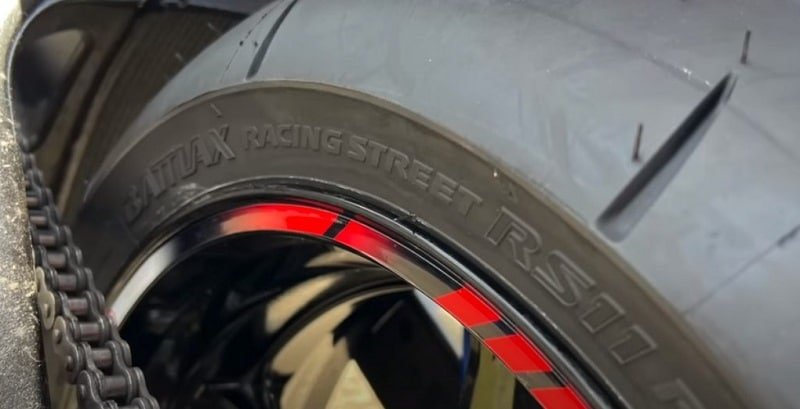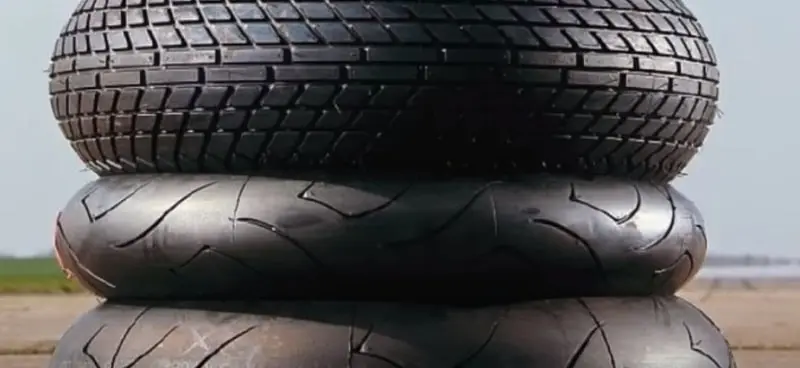As a rider, at some point, you will have to make a decision on what kind of tires to put on your motorcycle for track use.
For less experienced riders, this decision can be even more daunting. Many riders might think that buying the stickiest and most expensive race tire is the best choice, but this is not always the case.
It is possible to use road motorcycle tires on a track, but it is not recommended. Road tires are designed for everyday use and are not optimized for the high speeds and cornering forces of track riding. Track tires are specifically designed for track use and provide better grip and handling.
In this article, we will discuss why using the most expensive race tires may not be the best option and why using less sticky tires can be a more cost-effective and practical choice. We will also explore the best road and track tires for different types of riders.

The Drawbacks of Super Sticky Race Tyres
Super sticky race tires provide the highest levels of grip and safety margins for rider error on the track. However, these benefits come at a cost.
Super sticky tires are expensive and wear out quickly, which means you will be paying over the odds for a tire that you might not even be able to use to its full potential.
Additionally, these tires offer levels of grip that many riders on the track are unable to use. As you move up the stickiness scale, the tire needs to be worked harder to get the heat into it and make it work properly.
For example, an under-temperature racing slick won’t give you the same level of traction as a road-biased track tire that’s up to temperature.
The Benefits of Road-Biased Track Tyres
Less sticky tires, such as road-biased track tires, maybe a better option for many riders on the track. These tires are designed to offer enough grip for riders to ride comfortably and are less expensive than super sticky race tires.
Some schools in the UK even use sports touring tires because they know they’ll offer enough grip for students to be able to ride comfortably.
Additionally, road-biased track tires offer high lean angle potential, which is an important consideration for many riders. In terms of lean angle potential, there’s not much difference between these tires and super sticky race tires.
However, the biggest differences between road-biased track tires and race tires come from two areas: braking and power.
Road-biased track tires don’t offer the same level of grip as race tires when hard on the brakes, and they can’t withstand as much power as racing slicks or cup race tires.
Balancing Learning and Safety

Using less sticky tires is a great way to learn about traction limits, but it’s essential to balance learning with safety.
While using less sticky tires in the interest of learning and money saving may be good to a point, going too far in the other direction can raise questions about safety. For most riders, picking up a tire designed for track riding is the best option.
However, it doesn’t have to be the most expensive race tire. Riders can go for a road-biased track tire, such as the Pirelli Rosso Corsa 2, which was designed for sporty road riders that want to get a few track days in too. This level of the tire is recommended for novice and intermediate group riders.
Practice Good Technique
When going for less sticky tires, applying and practicing good technique is essential. Super sticky race rubber does an excellent job of hiding any glaring errors in your riding, so riders who don’t practice good technique need that rubber to save their bacon.
However, riders who practice good technique put themselves in the best position to feel the signs from so-called lesser tires and learn something about traction limits.
The Wallet-Friendly Option
If you’re looking to save pennies, going for less-raced-focused rubber is a very realistic option. The biggest disadvantage of these tires is that they will have less in reserve to deal with glaring rider issues.
However, if you’re somewhere close to the mark in what is expected of you from a technique standpoint, this point shouldn’t come into play.
It’s important not to follow the crowd and just go with what everyone else is using. Trying something a little different, such as using road-biased track tires, may surprise you.
Features and Benefits
| Features | Benefits |
|---|---|
| Super Sticky Race Tires | Provide highest levels of grip and safety margins for rider error on the track. Offer consistent traction throughout the race. |
| Expensive and Wear Out Quickly | These tires are more expensive and wear out quickly, so riders might not be able to use them to their full potential. |
| Road-Biased Track Tires | Offer enough grip for riders to ride comfortably on the track. Provide high lean angle potential and are less expensive than super sticky race tires. |
| Balancing Learning and Safety | Using less sticky tires is a great way to learn about traction limits, but it’s essential to balance learning with safety. |
| Picking up a Tire Designed for Track Riding | Riders can go for a road-biased track tire, such as the Pirelli Rosso Corsa 2, which is recommended for novice and intermediate group riders. |
| Practice Good Technique | Essential to apply and practice good technique when going for less sticky tires. |
| Wallet-Friendly Option | Less raced-focused rubber is a practical and cost-effective option for many riders. |
| Not Recommended | Using road tires on the track is not recommended as they are not designed for this type of use. |
In conclusion, riders should consider their level of experience, technique, and riding style when selecting tires for the track. Using less sticky road-biased track tires can be a practical and cost-effective option for many riders.
While using less sticky tires is a great way to learn about traction limits, it’s essential to balance learning with safety. Ultimately, finding the right balance between grip, learning, and safety is key.
Conclusion
In conclusion, using road tires on the track is not recommended as they are not designed for this type of use. However, less sticky road-biased track tires can be a practical and cost-effective option for many riders.
Riders should also consider their level of experience, technique, and riding style when selecting tires for the track. Ultimately, the key is to find the right balance between grip, learning, and safety.
Previous Article: Why Are New Motorcycle Tires Slippery?

